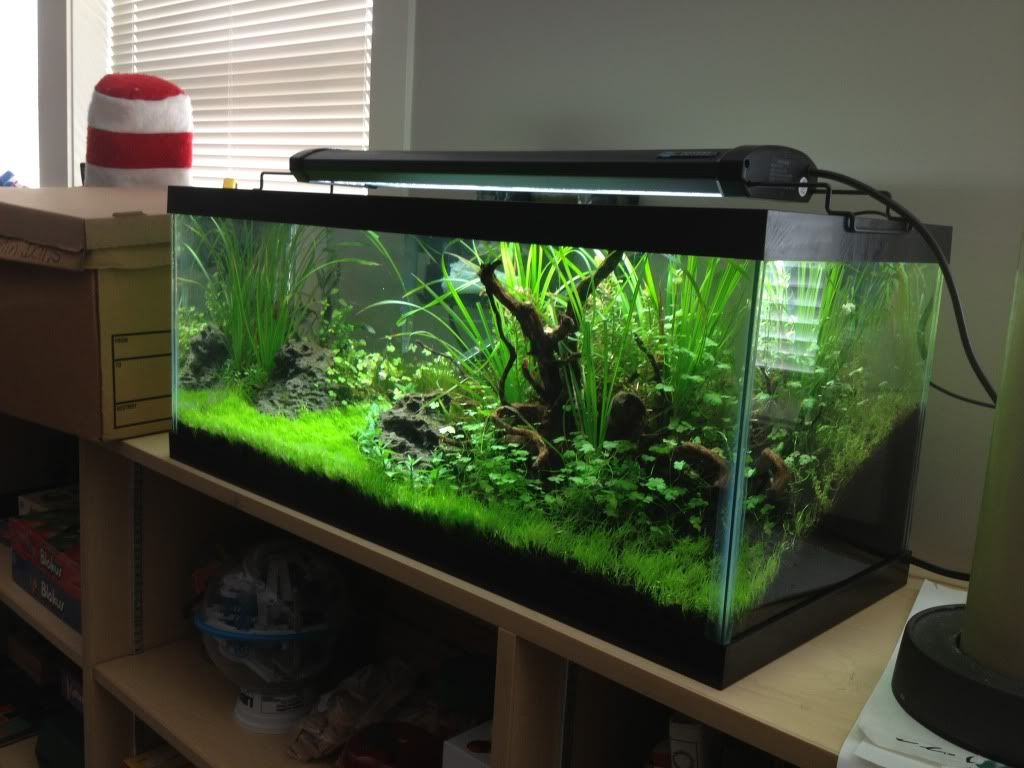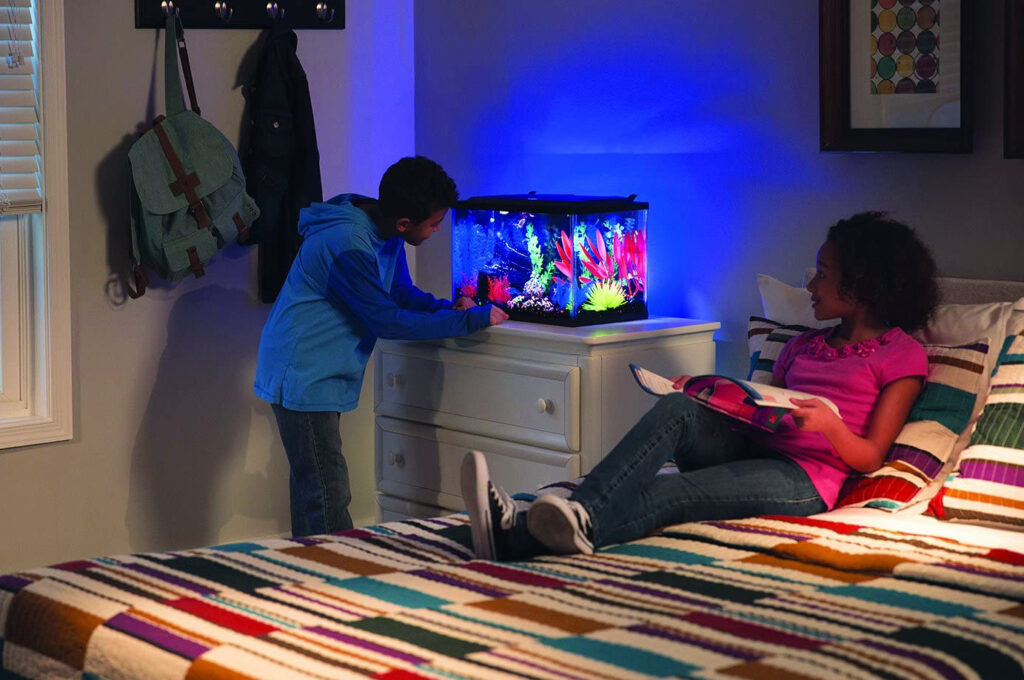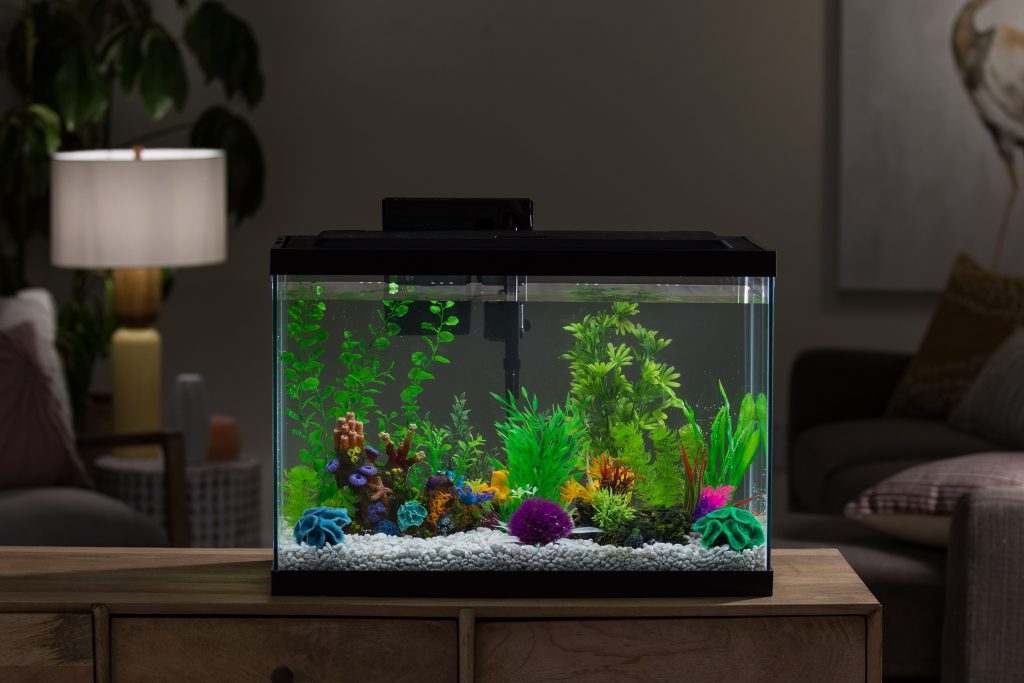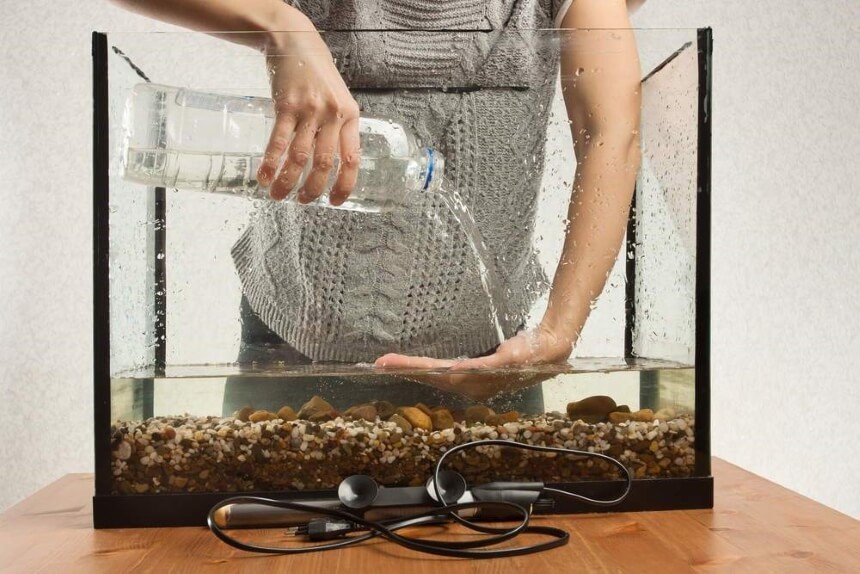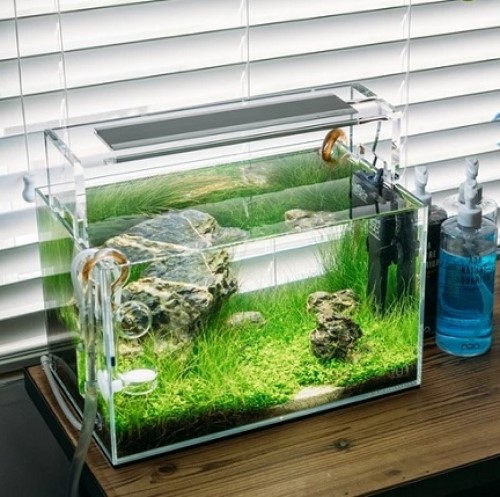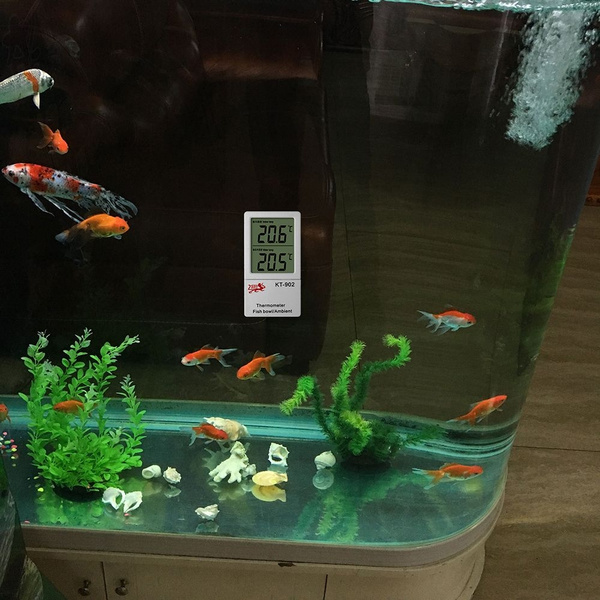

The question of how much gravel for a 10-gallon tank is one previous fish tank owners have asked and one that you might need the answer to as well. This is because the most common tank for fish keepers is the rectangular 10-gallon option.
Even if you decide to go with a 20-gallon or a 55-gallon fish tank, this information should be crucial in figuring out how much gravel you need. You can forego the option of gravel altogether, but only if you have another substrate in mind.
Notably, there are other considerations when deciding on gravel and substrate type that we will tell you about as we discuss your options below and delve into how much gravel is enough.

Users recommend the GloFish Aquarium Gravel for those looking for colorful aquariums since the option includes a mix of colors. You can even see more colors if you put this gravel under GloFish blue LED lights, which beautify the fish tank even more.
Another benefit is that gravel will give the fish in your pond a sense of home. This is true for most of the substrates you decide to use. It mimics the bottom of a river, lake, ocean, or whatever natural habitat the fish are from.
Some fish like to burrow at the bottom of these water bodies, and they will bring that practice to your fish tank as well. Additionally, if you decide not to add a substrate, whether gravel or otherwise, the fish will end up confused and stressed. In extreme cases the stress can even lead to the death of your fish.
Also, some people prefer to add to the aesthetics of the aquarium by adding a plant. However, just like the fish, aquatic plants need a substrate to be well anchored. In some cases, the substrate may also prove a valuable source of nutrition for the plants in question.
The last and probably the most important benefit of gravel is that it forms a home for necessary bacteria. Your fish will excrete waste, and if it is left in the water, it can poison them in the long run. The bacteria serve to break down this waste and even the excess food left in the tank, which keeps the water clean enough for the aquatic creatures to live.
While we would like to say that one size fits all when it comes to the fish tank substrate, it doesn’t. Even the gravel types vary, and you can only choose one if you know the needs of your fish tank. This necessitates that you educate yourself on the best practices while picking the gravel type and quantity to put in your fish tank. Below are a couple of considerations and things to think about before you settle on one option.

The plants you want to have in your aquarium will also dictate the type of gravel. Remember that some will take in their nutrients from the water, and thus it won’t matter much the kind of substrate or gravel you decide to use. These also don’t tend to have extensive roots and won’t need deep or fine gravel to survive in the tank.
Alternatively, those with big roots need deep layers of finer gravel to hold them up while providing nutrition. As such, you will need to research the aquatic plants you intend to get, just as you did with the fish.
While the 10-gallon tank is popular, there are other aquarium sizes available. Of course, if you go for a larger tank, the substrate amount that you’ll need for your fish to be comfortable will increase as well. The opposite is true for smaller aquariums.
Additionally, the shape will influence how much gravel you need to use. For instance, while 15-pounds of gravel is expected to give about 1.5 inches of gravel in a rectangular 10-gallon tank, the same amount of gravel will sit higher in the aquarium when put in a cylindrical tank of similar capacity.
The decorations can also form part of the substrate. If you’re going to add them, you should consider how they will affect the type and quantity of gravel you have already put in place.
The right amount of gravel should be between 1-4 inches from the tank’s base, depending on the factors mentioned above. As such, if you’re using plain gravel, about 10-15 pounds of gravel will suffice to give you between 1-1.5 inches when it’s spread out at the bottom.
However, if the fish tend to burrow into the substrate or you have deep-rooted plants, you may want to increase that height to between 2-4 inches. About 25-40 pounds of gravel will allow you to reach this height.
These figures tend to work for standard rectangular 10-gallon tanks. However, you will need to account for variances if your aquarium has a different shape and size.
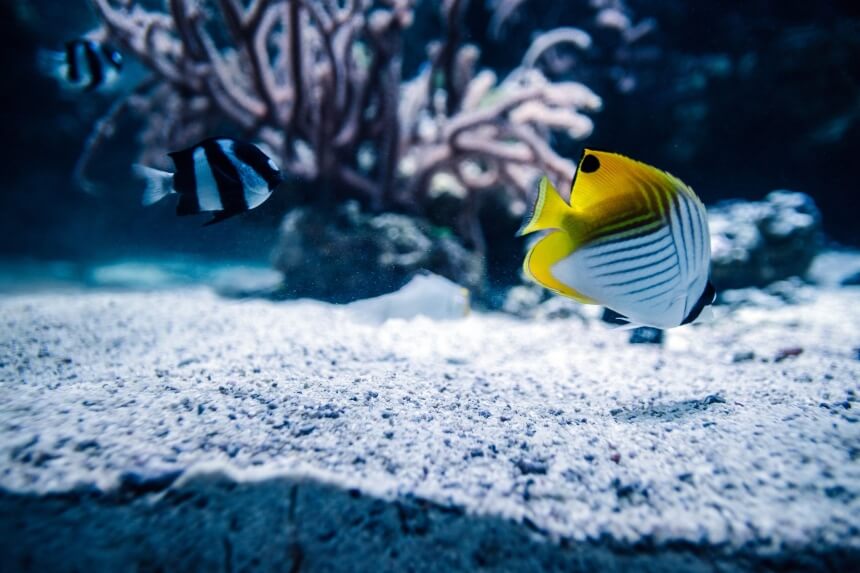
Crushed coral limits the types of fish and plant life that you can put in your tank. This is because it only works with certain types of African fish. As such, it’s even less popular than aqua soil. People also tend to choose sand as a substrate quite often. It is ideal for burrowing fish since it is softer than gravel.
Additionally, sand is so closely packed that the waste and excess fish food can’t get through it. Consequently, cleaning this substrate is easy when using a vacuum since all the waste sits on top. However, if you’re using a canister filter or vacuum to clean your aquarium, sand is more likely to cause a blockage. In rare cases, sand can also lead to toxicity in the tank when air pockets are formed inside.
The Stoney River White Aquatic Sand option is, according to most reviewers, the go-to option if you decide to use sand as the substrate in your tank. It’s safe for your fish even in freshwater aquariums and isn’t detrimental to the water pH.
If you purchase high-quality gravel and have a vacuum cleaner on hand, you might not need to change the gravel very often. Just make sure that you clean the gravel regularly if you want it to last longer.
Now that we’ve answered the question of how much gravel for a 10-gallon tank, you can start planning for your own aquarium. Remember that you also have the option of sand and other substrates that may also work. Also, while the above is a general guide, it won’t work for all tanks, and it’s up to you to account for that. Lastly, ensure you account for your fish’s needs and the plants you intend to put in the aquarium.
